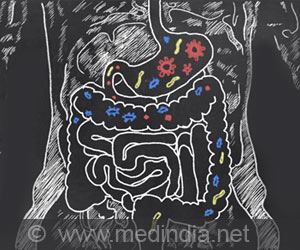
Gun Violence Exposure and Quality of Life in Nine US States
Go to source).
Lead author Jennifer Paruk, a research associate at the research center, said, "We found that witnessing or hearing about a shooting in your neighborhood was the most common type of gun violence exposure, and it was associated with a decrease in quality of life across all five domains we measured."
‘Witnessing or hearing about neighborhood gun shootings dramatically reduces quality of life. #gunviolence #stress #mentalhealth #medindia’





Advertisement
Impact of Gun Violence Exposure
The study revealed that 37 percent of participants reported at least one type of gun violence exposure, and the study population was representative of the overall population from those nine states, which means that more than a third of all people in those states – Colorado, Florida, Minnesota, Mississippi New Jersey, Ohio, Pennsylvania, Texas and Washington – face exposure to gun violence.Neighborhood exposure was most prevalent at 22 percent, followed by knowing a shooting victim (19 percent), being threatened with a gun (13 percent) and being shot (2 percent).
Advertisement
What Impact Does Gun Shooting Have on Quality of Life?
Indirect exposure had nearly as big an impact as direct victimization. Witnessing or hearing about neighborhood shootings predicted decreases in overall quality of life as well as physical, psychological, social, and environmental well-being.The researchers also examined cumulative exposure across all four types of gun violence experiences. They found that greater cumulative exposure predicted lower quality of life scores across all domains measured.
"Those with the most gun violence exposure, those who’ve been impacted in many different ways, have the lowest overall quality of life across all of these different domains," Paruk said.
Individuals who reported all four types of gun violence exposure had an adjusted average physical quality of life score that was 11.14 points lower than those with no exposure on a scale from 0 to 100. Their environmental quality of life score was 7.18 points lower on average.
The study used the World Health Organization Quality of Life - Brief Scale, which measures quality of life across physical, psychological, social and environmental domains. The researchers controlled for factors like income, education, prior abuse experiences, neighborhood safety perceptions and other demographics to isolate the relationship between gun violence exposure and quality of life outcomes.
Being threatened with a gun was associated with a 2.59-point decrease in physical quality of life, while being shot was linked to a 6.98-point decrease.
Advertisement
Support as a Solution for the Toll of Gun Violence
Paruk emphasized that the findings underscore the broad impact of gun violence beyond just those directly injured."We’re really recognizing the effects that indirect gun exposure can have on many types of quality of life," she said. "For people who are getting care for gun violence, their family members in the hospital with them or who were at home taking care of them could use a lot of support." The study suggests that reducing neighborhood gun violence could have wide-ranging benefits for community well-being.
"Reducing gun violence in particular neighborhoods would improve life for everyone in those neighborhoods,” Paruk said.
While the study didn’t test the efficacy or specific interventions, the researchers said their findings highlight the need for expanded support services for those indirectly impacted by gun violence, but such support is difficult to find.
"We might not even have support available to indirect victims," Paruk said. "And as a society, we might not recognize the harms that gun violence exposure can have indirectly. We need to make sure that the supports are available if people need them."
The researchers plan to conduct further analyses using the survey data, including examining how the frequency and recent of gun violence exposures relate to health outcomes. They said the findings reinforce the importance of considering gun violence as a broad public health issue affecting entire communities.
Reference:
- Gun Violence Exposure and Quality of Life in Nine US States - (https://link.springer.com/article/10.1007/s11524-024-00891-7)
Source-Eurekalert









